Advertisement
If you have a new account but are having problems posting or verifying your account, please email us on hello@boards.ie for help. Thanks :)
Hello all! Please ensure that you are posting a new thread or question in the appropriate forum. The Feedback forum is overwhelmed with questions that are having to be moved elsewhere. If you need help to verify your account contact hello@boards.ie
The Other Irish Battle Sites - non Williamite or War of Independence
Options
-
18-08-2011 8:49pm#1I had an idea for a thread a while back when I was having lunch at a battle site " The Bloody Stream" Howth Dart Station.10th August 1177, during the 2nd Norman Invasion of Ireland, Sir John de Courcy’s expedition arrived off Howth. Unable to leave his ship, the command was taken over by Sir Almeric Tristram, said to be a descendant of Sir Tristram, a knight of King Arthur’s Round Table. A great battle ensued against the Danes, who were then in occupation on Evora Bridge, over a stream; afterwards known as the Bloody Stream. During the construction of this public house, we found that the Bloody Stream runs directly under these premises. Having fought a constant battle with the stream flooding the bar, we decided to make peace with it, hence the name, The Bloody Stream.
http://bloodystream.ie/history.html
And
Howth Castle has its origins in medieval times. In 1177 Almeric, the first Lord of Howth, came to Ireland with John de Courcy. Legend has it that on 10th August, the feast day of St Lawrence, he won a battle which secured his possession of the Howth peninsula, at Evora Bridge close to the Church of Ireland church. In gratitude for this victory he is said to have taken the name of St Lawrence and his descendants still own and live in Howth Castle today.
Almeric built his castle of wood above the harbour but it is evident from a deed that by 1235 a new castle had been built on the present site in the middle of the fertile land. This again would have been built of wood and the earliest extant parts of the present structure date from the mid-fifteenth century.
Howth Castle has been extensively altered by succeeding generations, to adapt it to their requirements and the fashion of the day, most notably in 1738, when the house took on its current appearance and again in 1911 when Sir Edwin Lutyens renovated and extended the building. He liked the early Georgian style and his work carefully compliments the 1730s interiors.
So the idea with this thread is for Battles not connected with the War of Independence or the Williamite Wars- these were probably the biggest things in Irish History but not the only ones.
The Vikings, Normans and Gaelic Princes- all were cutting in for the same land but we see very little about them. The O'Neills and O'Donnells had the odd feud. I live in Dublin but do not know where the Battle of Clontarf took place.
Coincidentally nearby is Aideens Tomb http://www.megalithicireland.com/Howth%20Dolmen.htm Aideens GravePortal TombSituated in the grounds of Howth Castle lies the remains of what would of been a huge megalithic monument, the now slipped quartzite capstone weights an estimated 75 tons which would place it second in size to Brownes Hill dolmen in County Carlow. The portal tomb is aligned South East and the two portal stones,each one an estimated 2 1/2 metres high, and door stone still remain. You can see in the picture middle left where the capstone has slipped backwards from the portal stones.Folklore: Known locally as Aideen's grave this tomb is said to be the burial place of Aideen the wife of Oscar the son of Oisin. Oscar the bravest of all the Fianna slew three kings in his first battle, he died at the battle of Gabhra and it is said that Aideen died in grief at her loss, so Oisin buried her at Howth and set a cairn over her, a burial usually reserved for great warriors or kings.
Aideens GravePortal TombSituated in the grounds of Howth Castle lies the remains of what would of been a huge megalithic monument, the now slipped quartzite capstone weights an estimated 75 tons which would place it second in size to Brownes Hill dolmen in County Carlow. The portal tomb is aligned South East and the two portal stones,each one an estimated 2 1/2 metres high, and door stone still remain. You can see in the picture middle left where the capstone has slipped backwards from the portal stones.Folklore: Known locally as Aideen's grave this tomb is said to be the burial place of Aideen the wife of Oscar the son of Oisin. Oscar the bravest of all the Fianna slew three kings in his first battle, he died at the battle of Gabhra and it is said that Aideen died in grief at her loss, so Oisin buried her at Howth and set a cairn over her, a burial usually reserved for great warriors or kings.
 ]Situated: From Dublin take the R105 North, as you come into Howth look for signs for Deer Park Hotel and Golf course on the right, drive into the grounds past Howth Castle and up to the Car park. Walk to the right of the Hotel and follow the pitch and putt course keeping to the left of the course after around 200 yards you should come to a small path on your left the dolmen is situated to the right of this pathway.6
]Situated: From Dublin take the R105 North, as you come into Howth look for signs for Deer Park Hotel and Golf course on the right, drive into the grounds past Howth Castle and up to the Car park. Walk to the right of the Hotel and follow the pitch and putt course keeping to the left of the course after around 200 yards you should come to a small path on your left the dolmen is situated to the right of this pathway.6
Comments
-
Interesting thread as usual CDfm - and the first battle site that comes to mind is in my old hometown of Bray. Approaching Bray from Dublin where the old Wexford road forks right (just past the old Industrial Yarns factory) was for years the site of the Sunnybank Inn. This establishment, since demolished, was at a place originally known as Bloody Bank and apparently was the site of a famous battle between the O'Tooles and the O'Byrnes circa 1401/02. Nothing marks the spot today and the Inn itself has passed its name to the adjacent area. I can't even find a pic of the Inn or any useful link online - sorry.0
-
I believe there is a bustop there and this places it on Dargle Road
http://www.ratemypub.ie/pub.php?county=Wicklow&pub=Cuppels-Sunnybank-Inn
You could buy an apartment near the spot
http://www.myhome.ie/residential/brochure/apartment-6c-sunnybank-court-upper-dargle-road-bray-co-wicklow/12847070 -
The Battle of Knockdoe 1504 in Co. Galway was a particular bloody affair by Irish standards. The battle fought by the de Burghs and the Fitzgeralds (along with the usual scattering of allies) was supposedly the first Irish battle in which firearms were used. The site is today marked with the token brown 'battlesite' roadsign that is often seen throughout the country.
Great thread by the way, its a real shame that we don't utilise our numerous battlesites in this country by promoting them as tourist attractions. Apparently Culloden is one of Scotlands top tourist spots. With proper planning and marketing we could also have similar success in Ireland... Of course it would help if the local councils would stop granting planning permission on, or close by these historical sites.
This is the battle of Knockdoe battlesite. It lies about a mile North of Claregalway just off the N17.
Uploaded with ImageShack.us0 -
Ok it wasn't on Irish soil but maybe this counts.

The Battle Of Ridgeway was part of the Fenian Raids, an attempt to force the British out of Ireland by attacking Canada.0 -
This is very local to me
And all caused by Clare people causing trouble in Tipp
So the story goes, Brian Ború's wife ambushed the King of Leinster who was on his way to a wedding in Limerick.
She was based in Kincora and that's directly across the Shannon in Clare by a fording point, now Ballina - Killaloe.
Ambush took place on the Tipp side of the Shannon
Sad thing of course if it was a wedding party so it's likely women and children were massacred too
The King, mortally wounded asked to be taken where he could see his kingdom before he died.
And so he was and you can see Leinster from this vantage point in North TippIn his middle age Brian had married Gormlaith a Viking Queen reputed to be the most beautiful woman in Ireland, she was a cunning politician and her son Sitric “Silkenbeard” had become King of Viking Dublin (he later watched the Viking defeat at Clontarf from the safety of Dublin’s walls).
Brian had become King of Munster (uniting its three crowns) and was leading the bulk of his army around Ireland attempting to unite Ireland's kings (one way or another) to prevent Ireland being a soft target for a much feared full invasion.
The kings of Dublin and Leinster were Vikings and would not willingly join Brian.
While away Gormlaith was left in control of Kincora, she had kept diplomatic communications with Dublin and heard that a group including the King of Leinster would be travelling to Limerick for a royal wedding.
The road went through Kincora so she knew they would skirt around at that point, she sent lookouts while she gathered as many fighters as possible. The attack was lead by Gormlaith personally, as the travellers passed over Tountinna they were set on by the greater force and massacred (presumably including women and children if they were a wedding group). According to local legend the badly injured King of Leinster was brought 200 metres north so he could die within sight of Leinster (County Offaly).
Check out the amazing view in the backgroundThis attack was an astute political move by Gormlaith, in a single act she had proven her loyalty to Brian, killed his powerful enemy, and sent a strong signal to Leinster, Limerick and all his enemies.
So the name “Graves of the Leinstermen” probably started as a derogatory term for the place where these poor victims met their end.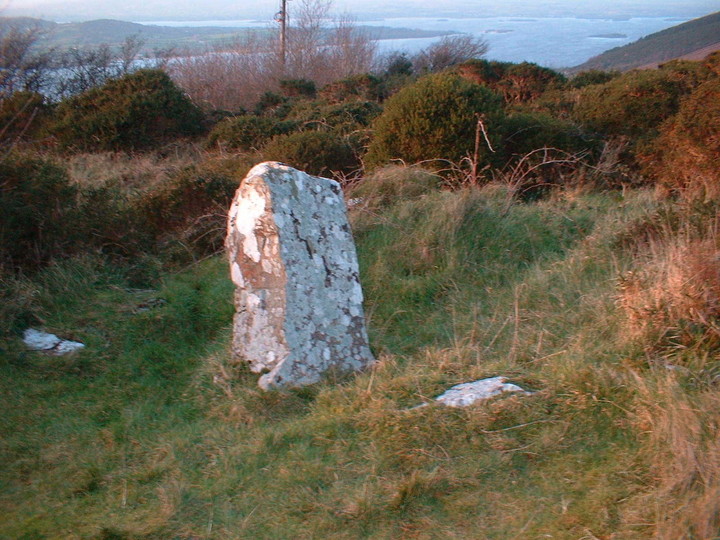
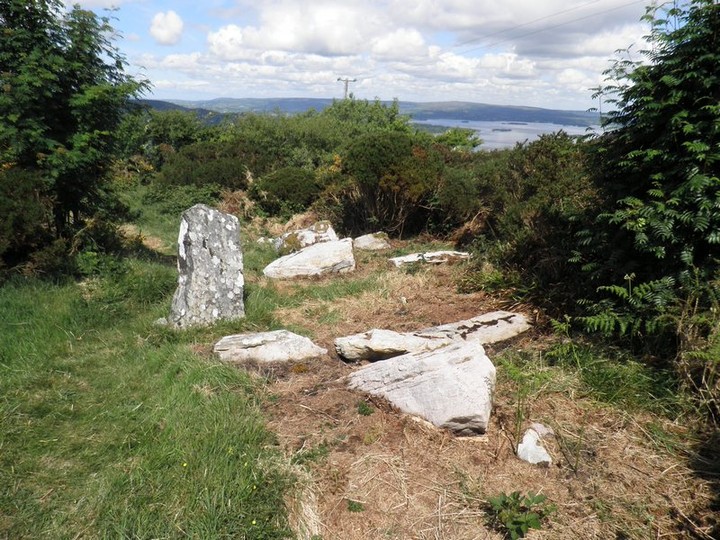 lebowski11 wrote: »Great thread by the way, its a real shame that we don't utilise our numerous battlesites in this country by promoting them as tourist attractions.
lebowski11 wrote: »Great thread by the way, its a real shame that we don't utilise our numerous battlesites in this country by promoting them as tourist attractions.
This site is well signposted all over the area and there is a large amount of public walkways open to tourists and locals around so credit to the council
But yes, other sites should get similar treatment0 -
Advertisement
-
One of the few high points in North Co Dublin is Baldungan/Baldongan Castle, its actually the remains of the Church that stood by the long gone Castle but everyone seems to call it the castle these days.

Chapters of Dublin. In June, 1642 it was defended by the Confederates of the Pale against the Parliamentary forces, and according to a contemporary tract entitled New Intelligence from Ireland, dated 17th June, 1642, Colonel Trafford besieged it with cannon, and put all the garrison, about 200 in number, to the sword, while two priests who were among the defenders, were examined on the rack and afterwards deported to France.
The following more detailed accounts of the siege appear in another tract or bulletin, undated, but evidently issued within a few days of the other: -
(I) "The Lords of the Pale are besieged in Baldongan Castle by our forces, who sent to Dublin for Ordnance to batter it, which was sent them, guarded with 400 men, but what they have done is not yet knowne."
"Sunday last was the day appointed for a set battle, which (it is said) was given, but what is done is not yet knowne; we hope to heare by the next post."
(2) "Colonell Trafford went out from us with some 1,000 men to forage and light upon a part of the enemy, who betook themselves to Baldongan Castle, some 12 miles from us who besieged them. Two large pieces were sent to him which came there; ten shot two shots [sic] onely that night; and on the next day they beat down the Castle and put all to the sword which were about 200, none of any note in it, but two Priests that were Captaines to those Rebells, one of them was brought home, and was examined and put to the Racke, but confessed little; that day 26 Priests were shipped for France, which deserve better to be hanged."
www.antiqueprints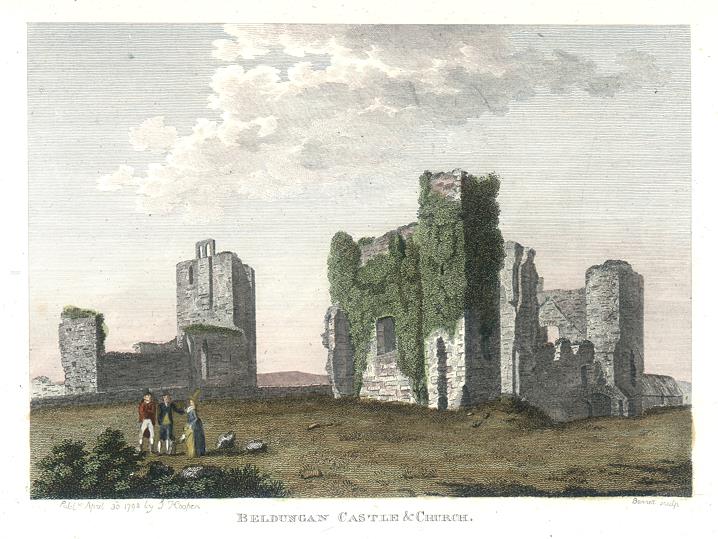 0
0 -
This happened in 1579 and the town walls were no match for the Desmond RebbellionThe Sack of Youghal
It is at this point in the turbulent history of Elizabethan Ireland that Youghal becomes relevant. In what Richard Berleth ('The Twilight Lords') calls a coincidence 'at once embarrassingly flamboyant and indisputably factual', a large section of Youghal's defensive wall collapsed within an hour of Desmond's proclamation of rebellion. The walled town had been a stronghold of the Desmonds since gifted by Robert FitzStephen to Maurice FitzGerald in 1215. However, it had long been amenable to English colonists and that was excuse enough for Desmond, along with his relative, the Seneschal of Imokilly, to attack, burn and plunder the town for five days solid. Nothing was spared. Even St. Mary's Church and Our Lady's College, which Desmond's forbears had founded, were 'well nigh demolished'. When Black Tom Ormonde recaptured the town some weeks later, he declared the town's 15th century walls to be in 'deplorable' condition and ordered them fortified. The Lord Mayor, Patrick Coppinger, was hanged from his own doorway for gross negligence. Ormonde claimed it was the sight of Youghal and the gruesome fate of its citizens that turned him against Desmond's 'cankered and alienated heart' ever after.
http://www.turtlebunbury.com/history/history_irish/history_irish_raleigh.htm
The church was also used by Cromwell as a stable.
It was at Youghal that one of the most poignant scenes of the rebellion took place. When writing his history of the period, Don Philip O'Sullivan Beare, recalled how his father, Dermot O'Sullivan, "..captain of the foot of Bear, with signal valour and agaisnt immense difficulties, scaled the walls by ladders, and the besieged in vain resisting. When pillaging the town a soldier of his, having forced a strong box, took out a sack full of gold and silver, saying, "Here most valiant captain, is a lucky find unless it be a dream." Dermot replied, "Do not my brave fellow, be so greatly charmed with your dream, lest, waking up, you find it be not a true image, but a delusion of the senses." (10)
http://www.odriscolls.me.uk/1538-1615.htm
The Town Walls above and below Myrtle Grove -normally the residence of the Baron of Youghal at that time. Walter Raleigh lived there when in Ireland. 0
0 -
I always give the statue to Red Hugh O'Donnell's victory at the Battle of the Curlews in 1599 outside of Boyle in Co Rosscommon a look as I pass by. My family name comes from nearby Leitrim and I often wonder if any of my ancestors would have been in Red Hugh's army that day. I like to think they were


http://militaryhistory.about.com/od/battleswars14011600/p/curlewpass.htm0 -
Here is Inchiquin Castle , once home to the old Countess of Desmond and attacked by Cromwell in 1650 after Cork and Youghal declared for Cromwell.

The early part of the debate was around her address – Inchiquin – which led many people to wonder if she came from this part of the country at all or whether she was, in fact, an O’Brien from Inchiquin in Clare. It was eventually conceded that she did live in Inchiquin – an old name for the area between Killeagh and Cork. You will visit her home there – a fortified round tower castle, now sadly deteriorating rapidly. The visit of Oliver Cromwell did not help as his large guns left a huge hole in the walls. That hole and the ever encroaching sea combine to ensure that, soon, the castle will itself soon fall. Make sure you visit it . You won’t find signposts to take you – you will have to follow my instructions but fear not!
The Olde Countess lived until she was 140Our Olde Countess is very much a case in point. I have seen her considered to be the wife of the 7th Earl and the 12th Earl of Desmond. I have read that Raleigh confirms her age. He does not. For what it is worth – I believe she was the wife of Thomas , the 7th Earl, known as Baldy Tom
The Origan of the Picking Cherries Joke is believed to originate here -see if you can spot it. A figure very familiar in the neighbourhood of Youghal in the time of Spenser and Raleigh was that of the aged Dowager Countess of Desmond, about whom strange traditions floated. Widow of a man who, in 1529, had become Earl of Desmond at the age of seventy-five, and having survived him for seventy years, it is not strange that the 'Old Countess' became one of the wonders of her age. Rumour said that she was born in 1464, that she had been maid of honour at the Court of Edward IV (d. 1483), and that she had danced with Richard III when Duke of Gloucester, of whom she retained memories much more favourable than those which have come down to us. Her husband, Sir Thomas the Bald of Desmond, must have been sixty years of age when she married him. He was the third son of the eighth Earl, beheaded at Drogheda in 1468, and in spite of the efforts at reparation made by Edward IV, he and his brothers were in a constant state of suppressed rebellion; "with banners displayed they sought revenge." The Earl, who seems to have been an eccentric, had divorced his first wife, Sheela MacCarthy of Muskerry, to marry Katherine, who was eldest daughter of Sir John FitzGerald, Lord of Decies, and his cousin; he had on his hands the blood both of his late father-in-law and his first wife's brother. The castle of Inchiquin, where he and Katherine lived, must have seen wild deeds. He was so distrustful of strangers that, instead of bed and board, he provided a halter for them outside his walls "as though all visitors were spies and wizards." He took full advantage of the system of coign and livery instituted by his ancestor, the first Earl of Desmond, for he lived half the year upon his tenants; and he refused to pay one groat of yearly revenue to the Crown, in spite of his immense possessions in Waterford, Limerick, Cork, and Kerry, or to obey any of the King's laws. Henry VIII ordered the Earl of Ossory in 1534 to curb this fierce and grasping man, but he died in the same year at the age of eighty, leaving a grandson by the son of his first wife, who was brought up at the English Court and educated in the royal household. Disloyal Geraldines dubbed him "the Court Page" Earl, and he was subsequently murdered by Sir Maurice Dubh, or Duff, "the Black Geraldine," "a man without faith or truth, cruel, severe, merciless," whose murder of the "Court Page" Earl was the first step "to the overthrow of this honourable house of Desmond, God in revenge thereof not leaving one of the race of Sir John or Sir Maurice alive upon the face of the earth." Sir Maurice's son was the James FitzMaurice who aided Earl Garrett's rising.
A figure very familiar in the neighbourhood of Youghal in the time of Spenser and Raleigh was that of the aged Dowager Countess of Desmond, about whom strange traditions floated. Widow of a man who, in 1529, had become Earl of Desmond at the age of seventy-five, and having survived him for seventy years, it is not strange that the 'Old Countess' became one of the wonders of her age. Rumour said that she was born in 1464, that she had been maid of honour at the Court of Edward IV (d. 1483), and that she had danced with Richard III when Duke of Gloucester, of whom she retained memories much more favourable than those which have come down to us. Her husband, Sir Thomas the Bald of Desmond, must have been sixty years of age when she married him. He was the third son of the eighth Earl, beheaded at Drogheda in 1468, and in spite of the efforts at reparation made by Edward IV, he and his brothers were in a constant state of suppressed rebellion; "with banners displayed they sought revenge." The Earl, who seems to have been an eccentric, had divorced his first wife, Sheela MacCarthy of Muskerry, to marry Katherine, who was eldest daughter of Sir John FitzGerald, Lord of Decies, and his cousin; he had on his hands the blood both of his late father-in-law and his first wife's brother. The castle of Inchiquin, where he and Katherine lived, must have seen wild deeds. He was so distrustful of strangers that, instead of bed and board, he provided a halter for them outside his walls "as though all visitors were spies and wizards." He took full advantage of the system of coign and livery instituted by his ancestor, the first Earl of Desmond, for he lived half the year upon his tenants; and he refused to pay one groat of yearly revenue to the Crown, in spite of his immense possessions in Waterford, Limerick, Cork, and Kerry, or to obey any of the King's laws. Henry VIII ordered the Earl of Ossory in 1534 to curb this fierce and grasping man, but he died in the same year at the age of eighty, leaving a grandson by the son of his first wife, who was brought up at the English Court and educated in the royal household. Disloyal Geraldines dubbed him "the Court Page" Earl, and he was subsequently murdered by Sir Maurice Dubh, or Duff, "the Black Geraldine," "a man without faith or truth, cruel, severe, merciless," whose murder of the "Court Page" Earl was the first step "to the overthrow of this honourable house of Desmond, God in revenge thereof not leaving one of the race of Sir John or Sir Maurice alive upon the face of the earth." Sir Maurice's son was the James FitzMaurice who aided Earl Garrett's rising.
After the death of her turbulent spouse the Countess lived on at Inchiquin Castle near Youghal, which had long been looked upon as a dower house for widows of the Earls of Desmond. She made over the property to Garrett, Earl of Desmond, then out in rebellion, but after his attainder it was granted to Raleigh, who recognized her prior claim in two leases drawn up by him. He knew personally the aged lady, who lived not many miles from his house at Youghal. When Boyle obtained Raleigh's lands the old Countess of Desmond, whose jointure came to an end at the age of the 'trust term' of ninety-nine years, leaving her reduced to penury, was obliged to revisit the Court to lay her case before Queen Elizabeth and prove her identity. She was accompanied by her daughter. Landing at Bristol, tradition says that the old lady "came on foot to London, as she was wont to walk weekly at home to Youghal on market-days. But her daughter being decrepit, was brought in a little cart, their poverty not allowing better means." Her appearance at Court created a sensation, and is mentioned in many of the memoirs of the day. Bacon says that tradition gave her sevenscore years, and Raleigh in his History of the World says, that she was alive in 1589 and "many years afterwards, as all the noblemen and gentlemen in Munster can testify." [8] She lived on till 1604, thus outliving at least three�tradition would make it six�of the Queen's ancestors and Elizabeth herself. She witnessed the great power and the downfall of the house of Desmond, caused partly through the misdoings of Englishmen, but largely also by the disregard of all laws, human and divine, by her husband and his kindred. She is said to have died from a fall while picking cherries from a tree in Raleigh's garden.
.http://www.libraryireland.com/HullHistory/Munster2.php
An anecdote here, did Shakespeare visit YoughalDid William Shakespeare ever visit Youghal ? Could he have? Would he have ? There is not a shred of evidence available to suggest that he did , nothing to suggest that he even considered Ireland. Or , or , or is there some shred of a possibility within the legend itself? Shakespeare was friendly with Walter Raleigh, friendly also with Edmund Spencer. He has a fair amount of Irish connections in his writings and perhaps depicted the first stage Irishman in his plays! One of the connections is the Annyas family – William and Francis Annyas were Mayors of Youghal – Francis was Mayor in 1569, 1576 and 1581 while William Annyas was Mayor in 1553. Now Francis’ sister married Rodrigo Lopez and many people believe he was the person Shakespeare used as the model for the character Shylock ( the Merchant of Venice) – while also, obviously, being aware of Marlowe’s “The Jew of Malta”. The Annyas family were probably hidden Jews, living as Christians but retaining their Jewish religion – this was the accusation put to Rodrigo Lopez and his final words on the scaffold “I love Jesus Christ as much as I love her Majesty the Queen” can be understood in various ways!
By the way, if you want a really harrowing account of the effects of famine and war on people – read Spencer’s “A View of the State of Ireland” which he wrote to describe what the country was like after the Munster Rebellion. Spencer died in 1598 and his widow married a man from Youghal – Tynte – he whose castle can still be visited in the Main Street. The widow who married Tynte is buried in Kilcredan – a church we will visit on the trail.
Raleigh was Mayor of Youghal for two years. Maybe Raleigh invited him over to visit . And most significantly - Shakespeare would have a particular interest in Youghal – the harbour master in Youghal in the 15th century was a Thomas Shakespeare from Bristol. The family name Shakespeare continued to survive in East Cork into living memory when the last member of the family died in Cobh. So Shakespeare could have a family connection and some friends in East Cork. Could have – that is as far as I can go. Could have. So he could have visited Raleigh and Spencer ( or visited Spencer’s widow) and the Shakespeare family in Youghal. http://cycleyoughal.wordpress.com/tale-spins-of-the-spokesman/tracing-the-steps-of-the-old-countess/0 -
lebowski11 wrote: »The Battle of Knockdoe 1504 in Co. Galway was a particular bloody affair by Irish standards. The battle fought by the de Burghs and the Fitzgeralds (along with the usual scattering of allies) was supposedly the first Irish battle in which firearms were used. The site is today marked with the token brown 'battlesite' roadsign that is often seen throughout the country.
Great thread by the way, its a real shame that we don't utilise our numerous battlesites in this country by promoting them as tourist attractions. Apparently Culloden is one of Scotlands top tourist spots. With proper planning and marketing we could also have similar success in Ireland... Of course it would help if the local councils would stop granting planning permission on, or close by these historical sites.
This is the battle of Knockdoe battlesite. It lies about a mile North of Claregalway just off the N17.
Uploaded with ImageShack.us
the reference to guns being used was when a soldier wandered into the enemy camp and was clubbed to death, but whether or not they were used in the field has never been established. I think I came across a blogspot on the subject and William Henry has also written about it.0 -
Advertisement
-
HellsAngel wrote: »I always give the statue to Red Hugh O'Donnell's victory at the Battle of the Curlews in 1599 outside of Boyle in Co Rosscommon a look as I pass by. My family name comes from nearby Leitrim and I often wonder if any of my ancestors would have been in Red Hugh's army that day. I like to think they were


http://militaryhistory.about.com/od/battleswars14011600/p/curlewpass.htm
fortunately the sculpture is not made of bronze or it would have been stolen by now.0 -
The Battle(s) of Macroom
Battle of Macroom /Battle of Bealach LeachtaBrian Boru and Bealick
Brian Boru was born around 940, the youngest of two sons of Cennedig, head of Dal Cais, one of the royal free tribes of Munster. When Brian's elder brother, Mahon, suceeded Cennedig as king, he and Brian quarrelled as to their policy toward the Viking raiders. Brian took to the hills with a guerilla band, which grew to take terrible toll upon the Vikings. Eventually, after failing to reach a lasting settlement with the Danes, Mahon agreed upon policy with his brother and joined him in raising an army to fight the Vikings. Ivar, King of the Ostermen of Limerick, allied himself with the O'Mahony and O'Donovan Clans of South Munster. The O'Mahoneys managed to capture and kill Mahon at Aghabullogue, near Macroom. In 978, Brian avenged his brother's death by killing Ivar in single combat. He then picked off and killed O'Donovan. Brian met the O'Mahonys at The Battle of Bealach Leachta, near the confluence of the Sullane and the Laney rivers, in a day long battle in which Brian was reinforced by minor chieftains, who realized Brian's potential as a leader. O'Mahony was supported by the remains of the O'Donovan clan and fifteen hundred Danes. Forced to retreat, they took refuge at Leacha Dubh, Macroom, where he was discovered and killed by Brian's son, Murcha. Following the battle, Brian was crowned King of Munster. This was Brian's first major defeat of the Vikings, proving his military prowess and placing him in contention for the position of Ard-Ri, the first and last real king of all Ireland. He was finally recognised as such circa 1002 C.E.
Bealach Leachta, the Way of the Stones, has become Bealick. The stones are gallauns in a field opposite and a little west of Bealick Mill probably placed there to commemorate the battle, although there is no proof of this, they may be much older.
Here is a link to the reputed location and you will see that the ESB have helpfully marked the location with a pole -regular Time Teamers the ESB.
The Old Mill and Golf Club are also given as locations.
The Second Battle of Macroom
Macroom Castle[FONT=Verdana, Arial, Helvetica, sans-serif]In 1650 there was a major battle between Cromwell's forces led by Lord Borghill and those loyal to King Charles under the command of Bishop Mac Egan. The forces of Cromwell were victorious, resulting in the Bishop being captured and hanged in nearby Carrigadrohid and Macroom Castle being handed over in 1656 to Admiral Sir William Penn, father of William Penn, founder of Pennsylvania. [1644-1718]
http://www.foundmark.com/Macroom/history/index.html.[/FONT]
http://www.megalithic.co.uk/modules.php?op=modload&name=a312&file=index&do=showpic&gid=195&pid=48630&orderby=dateDCarrigadrohid Castle
Our Locality

Carrigadrohid Castle stands on a rock in the middle of the river Lee adjacent to the bridge which gives the village its name. It was erected in the fifteenth century by the MacCarthys of Muskerry, with an extension to the east and an annex to the north being added in subsequent centuries. It was besieged by Parliamentary forces following the Battle of Macroom, and Bishop MacEgan of Ross was hanged by the reigns of his own horse outside the castle having refused to implore the Irish garrison to surrender to the Cromwellian army. The MacCarthys were dispossessed and the castle ended up in the hands of the Bowen family. It has been in ruins since the late 1700s. In recent years, a local group has been formed with the aim of preserving the castle.
http://canoveens.com/carrigadrohid_castle__.html0 -
There is a good book out called A Terrible Beauty which describes a lot of Irish battles. Hayes also has a good book on the subject.0
-
Here is a piece on Viking raids but have bones and artifacts been found in Dublin to pinpoint their locations.Bones of the Vikings: when raiding goes wrong
August 15, 2011 Categories: Archaeology blogs by admin 2 Comments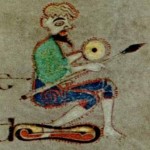
The ninth and tenth centuries saw the arrival of a new force on the Irish political scene, the Vikings. These Scandinavian warriors were attracted by the wealth of the Irish monasteries and they came in search of booty and glory. The initial attacks were mainly confined to the coastline, but soon Viking bands were venturing far inland. Although a profitable enterprise, raiding could also be a deadly one, as many Vikings were to find out.
This is demonstrated by the large number of Viking warrior burials that have been found in Dublin city, as well by descriptions in the Irish Annals, which detail numerous occasions when Viking war bands were defeated by Irish kings. Among these many written accounts are descriptions of Viking losses to the Ulaid in AD 811, to the men of Brega in AD 837 and to the armies of Osraige in AD 846/847 when over 1200 Vikings are said to have died. The kings of Tara also inflicted routs on Viking forces, with 700 being killed in AD 848, 240 more in AD 866, while in AD 980 a crushing defeat of a large Viking army is described as a ‘red slaughter’. The descriptions of these battles in the Irish annals are terse but more information on what may have happened to these defeated Scandinavian warriors can be seen in some stunning excavation results from across the Irish sea in England.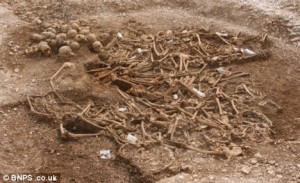 Weymouth mass Viking grave
Weymouth mass Viking grave
At Weymouth, in the south of England, an excavation in 2009 by the Oxford Archaeology Unit revealed the remains of 51 decapitated men, mostly in their late teens and early twenties. They had been buried in mass grave, with their skulls carefully placed in one corner of the pit and their bodies dumped just a feet away (see above image). The decapitating blows which killed the men were hit with such force that cut marks were left on the victims, skulls, collar bones and jaws. A number of the skeletons also had evidence for blade marks on their arms suggesting that they had raised their hands in a vain attempt to shield themselves. Isotope analysis of dead men’s teeth indicated that they originated in Scandinavia; with one of the bodies probably belonging to someone who had lived most of their life within the Arctic Circle. Radiocarbon dating suggests that these young warriors died sometime between 910 and 1030AD, a time when England experienced a second wave of Viking raids along its southern coast. These unfortunate men appear to represent a Viking raiding party that were captured, stripped of their weapons and then summarily executed by the local Anglo-Saxons.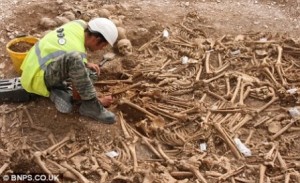 Close up of Weymouth Vikings
Close up of Weymouth Vikings
Interestingly, there were more bodies than skulls at Weymouth, which may indicate that some of the heads were kept as trophies. This is reminiscent of an account in the Irish Annals when Aed Finnliath, king of Tara and the Northern Uí Néill plundered all the longphoirt (Viking defended bases) of the north ‘a slaughter was made of them [the Vikings]. Their heads were collected to one place, in presence of the king; and twelve score heads were reckoned before him’ (Annals of the Four Masters, AD 864).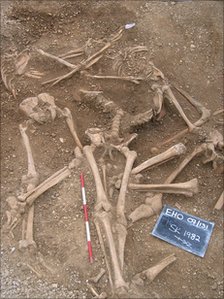 Oxford Vikings (from the BBC website)
Oxford Vikings (from the BBC website)
A second English site uncovered in Oxford in 2008, throws further light on what happened to Vikings who fell afoul of the locals. At this location a mass grave of young men, aged between 16 and 25, was uncovered by archaeologists working for Thames Valley Archaeological Services. There were at least 35 skeletons, all of which showed evidence of a violent death. Many of the skulls were covered in blade and puncture wounds that were mostly located to the back of the head. One of the victims had additional puncture wounds to his pelvis that seem to have come from behind him and from the side, as well as substantial blade wounds to his skull, suggesting that he had been attacked from all sides by at least by two different people. Indeed the pathology of the bodies, with wounds mainly located to the back of the torso and head, suggests that most of the men were slain as they tried to flee their attackers. Radiocarbon dating of the bones indicated that the young men were killed between AD960 and AD1020, which is very similar to those seen at Weymouth. Isotope analysis of their teeth indicated that they had a mainly seafood diet, which was very unusual for such an inland location. This and a number of other factors led the excavation archaeologists to believe that this group of young men represented another group of murdered Vikings.
As the Irish annals and these two archaeological sites graphically show, many young Scandinavian men left their homelands in search of riches and glory only to find a bloody death and a shallow grave. To go a ‘Viking’ was a perilous job indeed
http://irisharchaeology.ie/archives/7500 -
In 1575 Rathlin Island off the coast of County Antrim was the scene of a truly horrendous massacre. After surrendering to an English force led by Sir Francis Drake and John Norris, a small Scottish garrison of 50 or so were massacred in cold blood. This was followed by the systematic slaughter of civillian men, women and children who had been hiding on the island. Many of them were thrown from the cliffs to their deaths on the rocks below. Numbers of dead vary between 400-600.
This is the remains of Bruce Castle with the Scottish coastline in the background. The small Scottish force was garrisoned here when they surrendered.
Uploaded with ImageShack.us0 -
The Battle of Portlester in 1643 where Owen Roe's Confederates drove off a Government force commanded by Lord Moore. Lord Moore was killed by a ball reportedly fired by the O'Neill himself. Portlester is a townland near the village of Ballivor in western Co Meath. There was apparently once a castle here but its just farmland now.0
-
Heard an English prince died in a battle near Kellistown, Co. Carlow. Anyone have any info on that?0
-
I just Googled that one Lamentabli. The heir to the throne apparently. One Roger Mortimer. Thanks for that, I'd forgotten about that one.
Here's another. Its the Battle of Deputy's Pass (also called Battle of Rathdrum/Battle of Wicklow) that occurred in April 1599 near the village of Glenealy in Co Wicklow. An English army under Sir Henry Harrington was fell upon by Phelim O'Byrne at the ford here. Harrington had between 500 and 600 troops and O'Byrne probably less. The fighting was fierce and after a time the English force broke and fled towards Wicklow with the Irish nipping at their heels. By the time they got the 6 or so miles back to the safety of Wicklow castle only a few men remained with the rebels chasing them to within half a mile of the town. According to English accounts only a few stragglers survived.
Illustration of the battle from Trinity's archives:
http://digitalcollections.tcd.ie/home/index.php?DRIS_ID=MS1209_005
There's a book about it also:
Today the area is popular with walkers. Just to add that that "Deputy's Pass" got its name from the battle in reference to Deputy Harrington.0 -
The Battle of Baggotrath, & the Battle of Rathmines.
In 1649 Oliver Cromwell led a force of 12,000 troops which landed at Ringsend, then accessed by sandbank depending on the tide.
Cromwell is remembered for Drogheda and New Ross, but millions of people pass through Rathmines and Upper Baggot Street, never dreaming that this was a battlefield three and a half centuries ago.
Baggotrath Castle was where Upper Baggot Street is today, but before the Grand Canal reached the Liffey in 1796, Baggot Street was just the road to Baggotrath, a country lane until widened and straightened by the Wide Street Commissioners in second half of 18th century.0 -
Good one Tabbey. A wounded horse from that battle wandered into a Tavern in what's now Camden St hence where the pub gets its name, The Bleeding Horse.
The Battle of Tyrrellspass, July 1597. An English/Government Army led by Baron Trimlestown's son Barnwall attempted to surprise Captain Richard Tyrrell who was camped nearby in County Westmeath with a force of between three and four hundred. Tyrrell got wind of the idea however and sent a small body forward to meet him. It was just a feint and when the English army approached, Tyrrell's advance guard retreated giving the impression they were fleeing. Barnwall fell for it and gave chase but soon found himself in a defile where Tyrrell had posted his second in command Faily O'Connor and his men on either side of a hollow in the road. As they passed O’Conor sallied out, and with drums and fifes played Tyrrell’s March, which was the signal for attack. Tyrrell then rushed on them in front, and the English being thus hemmed in, were cut to pieces. Of the 1,000 strong army reputedly only one man survived who fled through a marsh and brought the terrible news to the garrison at Mullingar.
Apparently O'Connor fought so hard in the battle that he couldn't remove his hand from his sword it had swollen so much. The handle had to be cut off with a file to free it from underneath the guard. After this, Tyrrell went on to sack much of County Offaly driving Lord Mountjoy and his forces out of the county.
The town of Tyrrellspass gets its name from this event. The Castle, built by the Tyrrells in 1411, is still in use to this day.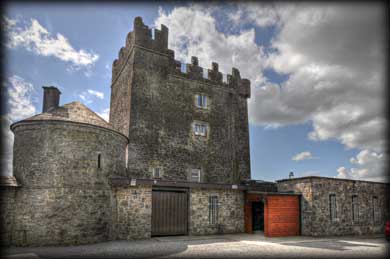 0
0 -
Advertisement
-
Bishop McEgan who was hung from the reins of his own horse at Carrigadrohid is buried and commemorated at Aghinagh (off road between Carrigadrohis & Macroom)0
-
Plaques I have spotted to battles include:
Battle of Darragh (between Mitchelstown and Kilfinnane) 1798
David Hurley killed in ambush at Boherash, Buttevant 31.3.1798
The Battle of the Big Cross, 1798 -Clonakilty
John Walsh Midleton, flogged to death
Gibbet Rath, Kildare Town 1798
Céim an Fhia (Keimineigh) 1822 (near Gougane Barra)
Battle of Dershue 1822 (near Kilmurry, Co Cork)
People of the Fealeside joined Richard O'Gorman 1848
Kilcloney Wood (outside Mitchelstown) 18670 -
Great thread, im going to print this and use it for visiting these wonderful historic sites on my next holiday 8-)0
-
Lamentabli sane wrote: »Heard an English prince died in a battle near Kellistown, Co. Carlow. Anyone have any info on that?
http://irelandinhistory.blogspot.ie/2014/07/blog-post_20.html
Kellistown was the site of several famous battles including one in 1398 when Roger Mortimer, Royal Lieutenant of Ireland was killed while doing battle with the O’Byrnes and other Gaelic chiefs.0 -
1647.11.13 - Battle of Knockanuss
Outside Kanturk - over 3,500 died. Plaque to Lieut. Gen Sir Alasdair MacGiolla Ciotach MacDonnell says he surrendered but was 'treacherously slain by a soldier of parliament after the battle'0 -
1822.1.25
A plaque not far off the Macroom to Cork roas records
'THE BATTLE OF DERSHUE,
A SKIRMISH WHICH TOOK PLACE
BETWEEN THE WHITEBOYS AND
BRITISH FORCES ON JANUARY 25TH 1822.
FIVE MEN, DANIEL CRONIN,
DENIS MURPHY, (DEIRBH),
TIMOTHY HALLAHAN,
RICHARD DROMEY
AND EDWARD O'BRIEN
WERE LATER HANGED NOT FAR FROM THIS SPOT'0
Advertisement



